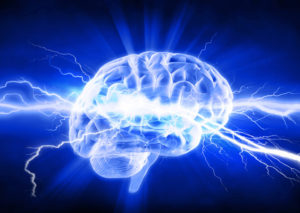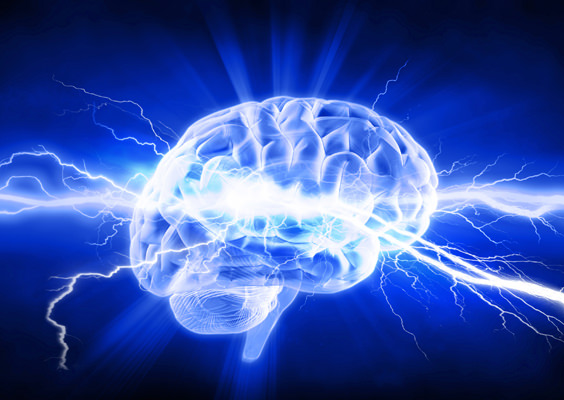
During my Palm Beach Anti-Aging Summit in October, I’m hosting some of the world’s leading authorities on oxygen therapy.
The Summit coincides with the grand opening of my 17,000-sq.-ft. Sears Institute for Anti-Aging Medicine, where I’m unveiling a specially-designed room that houses my first hyperbaric oxygen chamber.
I hope you’ll be there, as you’ll discover the newest applications and breakthroughs in this growing field. You see, when oxygen is pressurized — like it is when you’re inside the chamber — you can treat more than just chronic disease.
Truth is, hyperbaric oxygen can heal and revive parts of your brain most doctors give up for dead and damaged.
Let me explain.
Do Brain Cells Really Die When You Have a Stroke?
Oxygen is the primary substance your brain is deprived of when you have a stroke. And most doctors will tell you that if you’ve had a stroke, that area of the brain is dead and that’s the end of it.
But neurologists now also accept there’s a much larger area known as the ischemic (blood-starved) penumbra that isn’t dead, but is physiologically traumatized – and because so few doctors know how to treat this condition, eventually it does die.
But given the right, intense doses of oxygen, damaged brain tissue can function for up to eight hours after death.
Back in the late 1990s, three Dutch neuroscientists in a pathology laboratory in Amsterdam proved it by doing what no one had previously thought possible – they brought brain cells from 30 dead people back to life by suffusing these cells with oxygen.1
Such is the startling healing power of oxygen on human cells.
At my wellness clinic, I see all kinds of patients with oxygen-deficiency disorder – the worst of which is hypoxia, a serious condition of oxygen, whose
conditions include mental decline, chronic wounds and cancer.But low-oxygen and its complications are preventable.
And there are also extraordinary benefits to breathing this tasteless, odorless gas in its purest and most effective form.
How Does Hyperbaric Oxygen Therapy (HBOT) Work?
Oxygen restarts the same growth processes you enjoyed as a child. It encourages the regeneration of tissues, blood vessels and nerves. Increasing the intake of oxygen loads the red blood cells, thus promoting healing and all manner of regeneration.
This is why I’m adding a special, new room at my new anti-aging institute to provide my patients with hyperbaric oxygen therapy.
The research – and success – of hyperbaric oxygen has been so overwhelming, even the FDA has approved hyperbaric oxygen therapy. And now insurance companies accept it as part of a treatment protocol.
Pressurized oxygen delivered in this way means that oxygen is taken into the bloodstream in far greater quantities, and triggers your body’s natural healing process by:2
- Turning on DNA and genes associated with growth… the same ones needed to encourage healing.
- Turning off inflammation and cell death.
This effect occurs throughout the entire body. So the whole body experiences healing not just the area of the wound.
Recent research has demonstrated it can also regrow brain cells and reduce brain swelling, as well as limit radiation damage to soft tissue.3,4
The accepted wisdom in mainstream medicine says that if you have a stroke, the area of the brain which has been deprived of blood and therefore oxygen – usually by a clot – will die in four minutes.
Yet those Dutch scientists back in the late 1990s managed to persuade brain cells to fire up again, eight hours after the brain’s bodies were certified dead.
What these scientists demonstrated is that brain cells don’t die completely for a considerable time. For eight hours, they’re just ‘sleeping.’
Many hospitals and healing centers now also use hyperbaric oxygen therapy as a standard protocol for post-surgical wound healing.
And while I’m glad I’ll be able to provide hyperbaric oxygen therapy to patients who need it most, I hope you won’t find yourself needing it.
Omega-3s Boost Oxygen Intake and Delivery
Here’s a simple, natural way to get more oxygen into your blood and into your brain. And you can do it right from home.
You may already know the omega-3 fatty acids in fish oil are good for the heart and the brain.
Fatty acids play a role in the structure of all cell membranes in your body. Omega-3 fatty acids hold their shape better. This makes red blood cells more ‘flexible,’ so they move more easily between the capillaries and cells, delivering oxygen and removing carbon dioxide.
But fish oil does more than ease oxygen delivery, it also improves oxygen intake in the lungs and promotes angiogenesis.
- A study from the University of California observed fish oils relaxed arteries in the lungs and led to an overall increased oxygen intake into the lungs.5
- Another study from the University of Indiana noted fish oil supported continuous blood flow to and from the lungs in asthmatic patients, who often experience constricted breathing and shortness of breath after exercise.6
- Diets enriched with fish oil increased the number of endothelial progenitor cells which play a role in new capillary growth.7
Fish-oil supplements can be found just about everywhere these days, but it’s important to choose a brand with the highest purity and efficacy.
Honestly, I don’t recommend plain fish oil anymore. It’s poorly absorbed compared to newer discoveries, like krill and calamarine (squid). These lesser-known options are better equipped to keep your cells, tissues, and organs fully oxygenated.
You can find krill and calamarine at your local vitamin or health food stores.
To your good health,
![]()
Al Sears, MD, CNS
1. Recovery of axonal transport in “dead neurons”. Dai J, Swaab DF, Buijs
2. RM. Lancet. 1998 Feb 14;351(9101):499-500
Godman CA1, Chheda KP, Hightower LE, Perdrizet G, Shin DG, Giardina C.Hyperbaric oxygen induces a cytoprotective and angiogenic response in human microvascular endothelial cells. Cell Stress Chaperones. 2010 Jul;15(4):431-42. doi: 10.1007/s12192-009-0159-0. Epub 2009 Dec 1. ncbi.nlm.nih.gov/pubmed/19949909
3. Bennett MH, Weibel S, Wasiak J, Schnabel A, French C, Kranke P. Hyperbaric oxygen therapy for acute ischaemic stroke. Cochrane Database Syst Rev. 2014 Nov 12;11:CD004954. doi: 10.1002/14651858. CD004954.pub3.
4. ncbi.nlm.nih.gov/pubmed/25387992
5. Hoggan BL1, Cameron AL. Systematic review of hyperbaric oxygen therapy for the treatment of non-neurological soft tissue radiation- related injuries. Support Care Cancer. 2014 Jun;22(6):1715-26. doi: 10.1007/s00520-014-2198-z. Epub 2014 Mar 29. ncbi.nlm. nih.gov/pubmed/24794980
6. Walser B1, Giordano RM, Stebbins CL. Supplementation with omega-3 polyunsaturated fatty acids augments brachial artery dilation and blood flow during forearm contraction. Eur J Appl Physiol. 2006 Jun;97(3):347-54. Epub 2006 Apr 25. ncbi.nlm.nih.gov/ pubmed/16770472
7. Mickleborough TD1, Lindley MR, Ionescu AA, Fly AD. Protective effect of fish oil supplementation on exercise-induced bronchoconstriction in asthma. Chest. 2006 Jan;129(1):39-49. ncbi.nlm.nih.gov/pubmed/16424411

